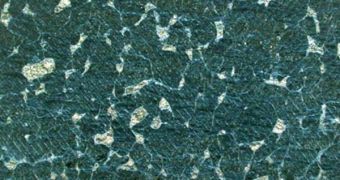Nickel is one of today's most popular metals, and chances are that, as we speak, you have at least a few nickel coins in your pocket. But, in spite of its massive use in several industries, no one really knew for sure, until just recently, how the metal came to form on our planet. A new research comes to clarify this old mystery, and proposes that ancient volcanoes, which erupted billions of years ago, where in fact the triggers that allowed for nickel's formation. In charge of the recent study were experts at the Carnegie Institution of Washington, in Washington, DC, led by geochemist Douglas Rumble.
He proposes that the old volcanoes blasted impressive amounts of sulfur dioxide into the atmosphere billions of years ago, and that this process is linked to nickel formation. As proof of this idea, he argues that the nickel in ore deposits is actually nickel sulfide. This means that the compound is abundantly rich in sulfur, the element that was released during past geological activities. According to Rumble, the element is “critically important” in the development of nickel supplies, and also a factor that currently facilitates the metal being extracted from dedicated mines, ScienceNow reports.
The mystery around nickel formation stemmed from the fact that the origin of its sulfur was unknown. Out of all the places where nickel formed, such as ancient sea floors, or molten magmas from the mantle that carried the element to the surface, none contained large concentrations of sulfur in the amount needed to justify the quantities found in nickel. Therefore, volcanic eruptions were sort of left as the only possible scenario. These events are known for spewing out large amounts of various chemicals, including the greenhouse gas carbon dioxide (CO2).
While checking out ancient rock samples collected from Western Australia, Rumble and his team discovered two particular types of sulfur isotopes – sulfur-33 and sulfur-32 – which are apparently only formed when ultraviolet (UV) light from the Sun hits sulfur dioxide. The results are in tune with the expert's idea, published in the current issue of the top journal Science. The same ratio of sulfur isotopes was discovered in rock samples from Canada as well, hinting at a global phenomenon.

 14 DAY TRIAL //
14 DAY TRIAL //